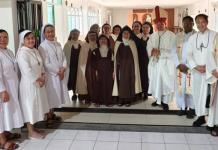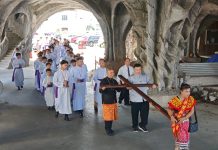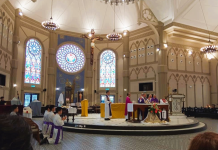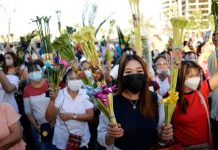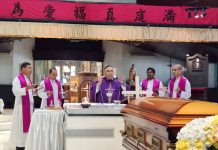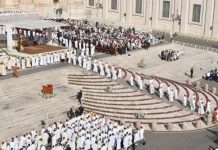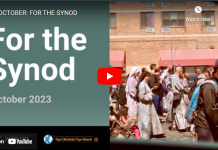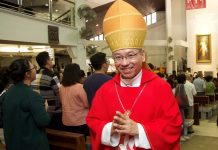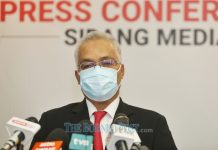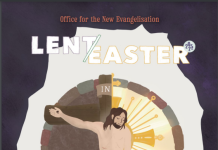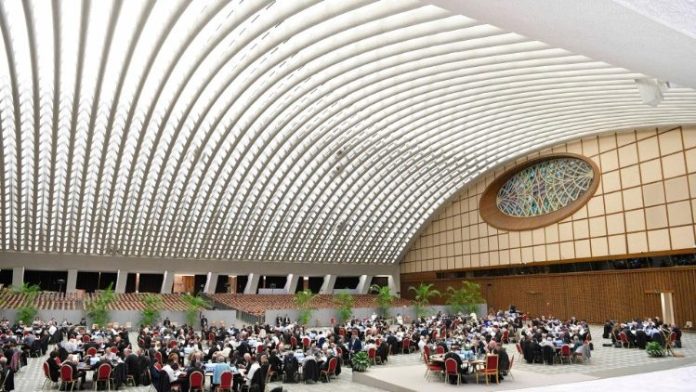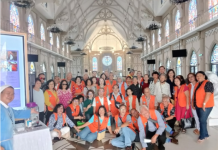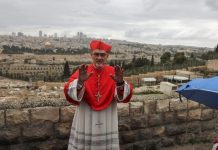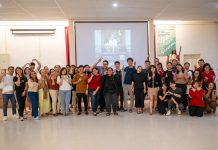The Holy See Press Office releases the ‘Instrumentum Laboris’, the text that will guide the work of the second session of the XVI Ordinary General Assembly of the Synod in October. Among the focuses of the document are the need for transparency and accountability, and the role of women in the Church.
By Isabella Piro
VATICAN CITY — How to be a missionary synodal Church? That’s the question at the heart of the Instrumentum laboris (IL) for the upcoming session of the Synod of Bishops, which will take place from October 2 to 27.
It will be the second session of the XVI Ordinary General Assembly, following the one in 2023. The IL – published today, Tuesday, July 9, and presented at the Holy See Press Office – does not offer any “pre-packaged answers” but rather “indications and proposals”.
These regard how the Church, as a whole, can respond “to the need to be ‘synodal in mission'”. That is, to be a Church closer to people, less bureaucratic, where all the baptized are – within their different ministries and roles – co-responsible and participants in its life.
The five parts of the document
The document is structured in five sections: introduction, foundations, and three central parts.
The introduction recalls the journey traveled so far and highlights the milestones already reached, such as the widespread use of the synodal methodology of the Spiritual Conversation.
The foundations (nn. 1-18) then dwell on the understanding of synodality, seen as a path of conversion and reform. In a world marked by divisions and conflicts, it is emphasized, the Church is called to be a sign of unity, an instrument of reconciliation and listening for all, especially for the poor, the marginalized, and the minorities excluded from power.
Valuing women in the Church
The foundations also give ample space (nn. 13-18) to reflection on the role of women in all areas of the Church’s life, highlighting “the need to give fuller recognition” to their charisms and vocation.
“God chose women as the first witnesses and heralds of the Resurrection,” recalls the IL; therefore, “by virtue of Baptism, they enjoy full equality, receive the same outpouring of gifts from the Spirit, and are called to the service of Christ’s mission..”
Participation and responsibility
In some cultures, the IL notes, “the presence of machismo remains strong”; therefore, the second synodal session calls for “a wider participation of women in the processes of ecclesial discernment and all stages of decision-making processes” along with “wider access to positions of responsibility in Dioceses and ecclesiastical institutions,” as well as in seminaries, institutes, theological faculties, and “an increase in the number of women judges in all canonical processes.”
The suggestions also concern consecrated women. It stressed the need for “greater recognition and support” for their life and charisms, along with “their employment in positions of responsibility.”
Theological reflection on female diaconate continues
As for the admission of women to the diaconal ministry, the IL reports that it is requested by “some local Churches,” while others “reiterate their opposition” (n. 17).
The theme, it is noted, “will not be the subject of the work” next October, and therefore it is right that “the theological reflection should continue.” In any case, the IL’s reflection on the role of women “highlights the desire to strengthen all the ministries exercised by the laity (men and women)”, and it also notes the request for “adequately trained lay men and women to contribute to preaching the Word of God, including during the celebration of the Eucharist.” (n. 18).
Part I – Relationships with God, among brothers and sisters, and among the Churches
After the introduction and the foundations, the IL focuses on relationships (nn. 22-50) that allow the Church to be synodal in mission: that is, relationships with God the Father, among brothers and sisters, and among the Churches.
Charisms, ministries, and ordained ministries are therefore essential in a world and for a world that, amid many contradictions, seeks justice, peace, and hope.
From local Churches, the voice of young people also emerges, who request a Church not of structures, nor of bureaucracy, but founded on relationships that are lived and animated by dynamics and paths.
From this point of view, the October Assembly will be able to analyze the proposal to create new ministries, such as that of “listening and accompaniment.”
Part II – Formative paths and community discernment
These relationships should then be developed in a Christian manner along paths (nn. 51-79) of formation and “community discernment,” which allows the Churches to make appropriate decisions, articulating responsibility and participation of all.
The IL affirms that there is a “school of synodality” in the intertwining of generations. All, “the weak and the strong, children, young and old” have “much to receive and much to give.” (n. 55).
The importance of accountability
“A synodal Church requires both a culture and practice of transparency and accountability,” reads the IL, “which are essential to fostering the mutual trust necessary for walking together and exercising co-responsibility for the sake of the common mission” (n. 73).
The working document emphasizes that today “the demand for transparency and accountability in and by the Church has come about as a result of the loss of credibility due to financial scandals and, even more so, sexual abuse and other abuses of minors and vulnerable persons. The lack of transparency and accountability fuels clericalism”. (n. 75).
Evaluation structures needed
Accountability and transparency, insists the IL, also affect “pastoral plans, methods of evangelisation, and how the Church respects the dignity of the human person, for example, regarding the working conditions within its institutions.” (n. 76).
Hence, “structures and forms of regular evaluation of how ministerial responsibilities of all kinds are exercised emerge as necessary” (n. 77).
The Church should guarantee, explains the IL, the publication of an annual report both on the management of assets and resources, and on the execution of missions, including ” an illustration of the initiatives undertaken in the area of safeguarding (protection of minors and vulnerable persons)” (n. 79).
Part III – Places of ecumenical and interreligious dialogue
The IL then analyzes (nn. 80-108) the places where relationships and paths take shape.
Inviting us to overcome a static vision of ecclesial experiences, the working document recognizes their plurality. It is in this context that the great themes of ecumenical, interreligious, and cultural dialogue are placed.
In this context, too, we find the search for forms of exercise of the Petrine ministry open to the “new situation” of the ecumenical journey (nn. 102 and 107).
Pilgrims of hope
The Instrumentum laboris concludes with an invitation to continue the journey as “pilgrims of hope” in view of the Jubilee of 2025 (n. 112).

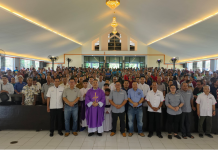
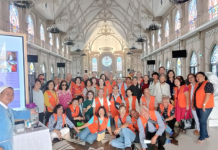
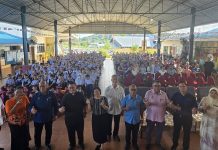

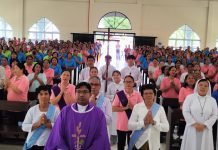
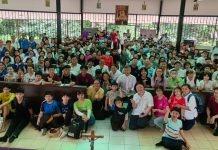

、尤金·玛格拉桑神父(Fr-Eugene-Maglasang)(前排右八)及叶祥胜神父(前排右十)于2025年1月25日在圣体堂合影。(摄影:蔡彼得).jpg)
